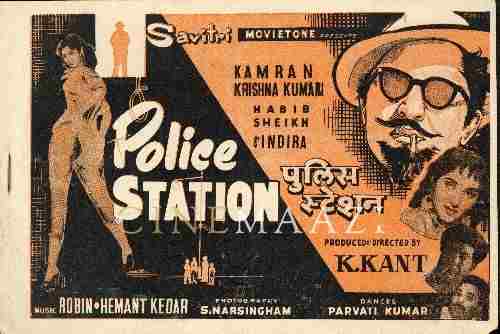The Chronicles of Valour: How Film's Tryst With Netaji Subhash Chandra Bose Began
“Subhasji Subhasji, Woh jaan-e-Hind aagaye, Hai naaz jis pe Hind ko, Woh shaan-e-Hind aagaye”.
On July 2, 1943, a bit less than two months after his perilous submarine voyage from Kiel to Sabang, Netaji was welcomed to Singapore with this song written by Mumtaz Singh and put to tune by Ram Singh Thakur. Long before Sonu Nigam's version raked up a few million views on YouTube, this song appeared on the soundtrack of at least two other films whose names are long since forgotten.
Amidst hopeful speculations about Netaji's survival after the 1945 Taihoku plane crash, his legacy continued to inspire a flurry of tributes, particularly around his birthday. A week-long exhibition of Netaji's photos was held by the D Ratan & Co. studio of Kolkata from 23rd January onwards in 1946. Poet Sabitriprasanna Chattopadhyay's biographical novel titled Subhashchandra O Netaji Subhashchandra was slated for a release around the same date the next year. Thespian Sisir Kumar Bhaduri, who considered Netaji the sole genuine Bengali politician, initiated talks in his memory. A version of Kadam Kadam Badhaye Jaa was recorded by music maestro Pankaj Kumar Mullick with Netaji's nieces and nephews on the 10th of December 1945.

Preservation and archiving have never been India's forte, particularly in the domain of films. This has led to the irrevocable loss of countless celluloid treasures to the passage of time. 1947 witnessed the release of two such "lost" films, paying homage to Netaji: Chhotubhai Desai's Jai Hind (also known as Netaji Subhash) and Ramnik Desai's Ek Kadam, featuring Damayanti Sahni (wife of Balraj Sahni). The 1948 film Hua Savera by Kulbhusan Agrawal garnered strong criticism in a review for incorporating an impactful clip of Netaji's speech, despite deviating from the freedom movement backdrop.
[https://www.cinemaazi.com/feature/hua-savera-an-unholy-hotch-potch-on-freedom-theme]
In this article, three films will be examined in detail, starting with Sipahi Ka Sapna (1948). Centered around the Indian National Army's groundbreaking 1943 march from Burmese soil into Indian Territory and its reverberations, this film was the brainchild of actor-director Sushil Majumdar who co-produced it with V D Swamy. Chiefly remembered today as the retired judge Nishanath Sen in Satyajit Ray's Chiriyakhana (1967), Majumdar was also the director of hits like Rikta (1939), Hospital (1960), and Lal Patthar (1971), etc.

Even though Majumdar was only credited as a producer in Sipahi Ka Sapna, his name appears overemphasized in advertisements and booklets, potentially indicating his involvement as a ghost director. The official directors of the film were editor Ardhendu Chattopadhyay (who went on to direct the mega-hit Baba Taraknath much later in 1977) and Majumdar's younger brother, Nani, who never directed a film before or after this.
Majumdar's parents, Basanta Kumar and Hemaprova, actively participated in India's independence struggle. Basanta Kumar, a devoted follower of Gandhi, endured a total of fifteen years in British prisons. Hemaprova, a member of the Bengal Assembly was also the chairperson of the Congress party of the Calcutta Corporation. Often considered as the first Bengali woman to be assaulted by the British police, Hemaprova joined the Forward Bloc in 1939. This was the very year Netaji formed the party after having resigned as the Congress president.
With a vantage point view of the Indian independence struggle due to his revolutionary parents, Sushil Majumdar naturally became involved in the movement. Only after serving a six-month sentence at Hooghly prison did he sit for the matriculation exam. From Gandhiji to C R Das to Netaji, he was familiar with most of the bigwigs in Indian politics. It was at Deshbandhu's house, that he met Netaji for the first time. There he was assigned the task of providing a guard of honor to Netaji, who arrived on a bicycle wearing khadi dhotis and chappals.
"My Dadu was one of those people who never believed for a moment that Netaji had died in the plane crash", Majumdar’s grandson Sanjay Mishra recounted. "Even though he was an established director by the mid-1940s, the decision to helm this film without any stars was a bold one indeed."

In spite of having worked with established film stars like Ashok Kumar, Chhabi Biswas, and P Jairaj by then, Majumdar chose to work with former INA staff who were unknown to the industry. The film's score was composed by the aforementioned Ram Singh Thakur of INA. It consisted of songs like Subhasji Subhasji, Kadam Kadam Badhaye Ja, Sab Sukh Chain, and Hum Dehli Dehli Jayenge, among others.

Despite its promotion and significance, Sipahi Ka Sapna, released on the 23rd of January, failed to make an impact at the box office, running for only two weeks. Among the 34 films directed by Majumdar, this is one of the many whose prints are no longer available. Possibly all that remains of the film is its official press booklet (available on Cinemaazi's website).
The next significant film to be based on a similar premise was the New Theatres production Pahela Admi (1950), directed by the legendary Bimal Roy.
Book-ended by his pathbreaking debut Udayer Pathey (1944) and his Bollywood phase that still holds us in thrall are some films like Pahela Admi that seem to have passed into an umbra region of the auteur’s career.
Rinki Roy Bhattacharya recalls Netaji as one of her father's heroes. "Baba really admired Netaji. He even met Netaji's daughter Anita during her first visit to India." The Bimal-Anita meeting was witnessed by Netaji's nephew Ardhendu Bose, the son of Sailesh Chandra, Netaji's younger brother.
Formerly recognized as the Bombay Dyeing man, Ardhendu, who featured in movies such as Cobra (1980) and Kaun? Kaisey? (1983), fondly shared his recollections of watching Pahela Admi at Mohan Studios during a telephone conversation held approximately five months prior to his demise on August 7, 2023. “I remember Anita's first visit to India, which was way back in 1960 or thereabouts. She was welcomed as an honored guest by Jawaharlal Nehru. She even interacted with students from Delhi University. Her travels took her to places like Bangalore and Goa. For a while, she stayed with us in Bombay. My mother (Bhaktibindu Bose nee Mitra) accompanied her on various outings then. The invitation to watch Pahela Admi came from Bimal Roy during this time. Together with my father, Anita and I watched a film about Netaji for the first time, and we really enjoyed it.”
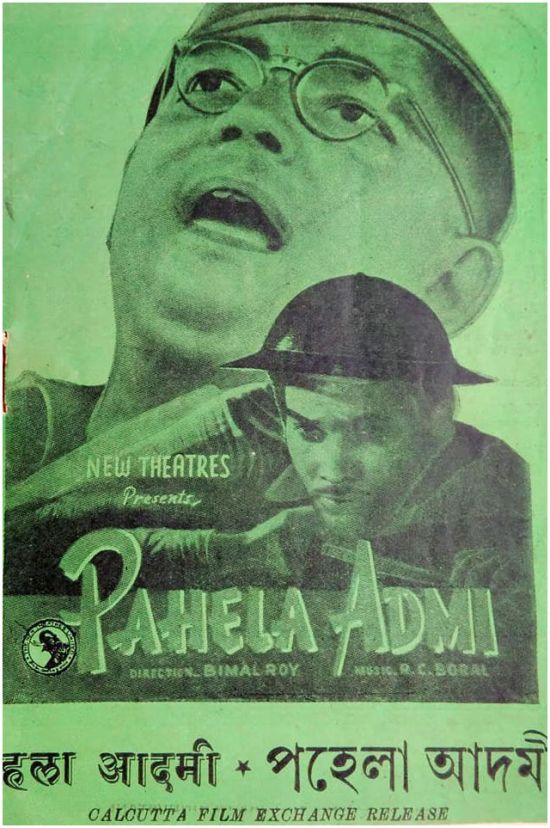
Other than sharing a common backdrop, Pahela Admi also shared a common contributor with Sipahi Ka Sapna. It was the person who was credited with the dialogue and story for both films. From the available information at hand, one can make the reasonable assumption that Lt. Mohd Nazir Khan (INA) of Sipahi Ka Sapna is the same man who would go on to act in the Bimal Roy film under the nom-de-plume Nazir Hussain. Under the latter name, he became a prominent Bollywood character actor.
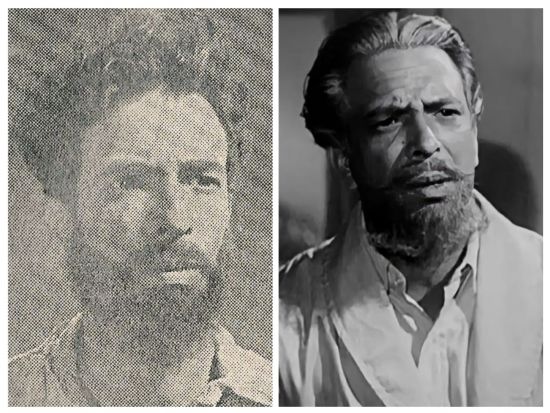
With Pahela Admi, Roy ended his more than decade-long association with the New Theatres, where he started as a cinematographer and later developed into a director.
"Baba's films always used to end up over-budget. He’d expressed his concern regarding the declining condition of New Theatres to his friend Hiten Chowdhury during the Bombay premiere of Pahela Admi. Hitukaka immediately woke up to that and invited Baba to make a film for Bombay Talkies," Rinki Roy Bhattacharya reminisced over the telephone.
The noted Bengali filmmaker Arabinda Mukhopadhyay, who was Roy's assistant back then, said in a 2004 interview: “While we were shooting Pahela Admi, the then Chief Minister of West Bengal, Dr. Bidhan Chandra Roy proposed B N Sircar (the founder of New Theatres) to build a studio on a 100-acre plot in Kalyani. During the time when Mr. Sircar was abroad touring foreign studios with a retinue of technicians, Bimal-da got involved in the making of another film called Tathapi (1950) for a different banner. Hence by the time our film came out, Ashok Kumar's Samadhi (1950), which was also based on the same backdrop, had already been released. It was because of this delay that Pahela Admi didn’t turn out to be as big a success as per our expectations.”
Directed by Ramesh Saigal, Filmistan’s Samadhi had a lot in common with its New Theatres counterpart. Netaji's clarion call to the youth to join his Indian National Army served as an inspiration for both. Both films featured a love story with tragic consequences at its center. While Samadhi capitalized on the mushy chemistry of its lead pair Ashok Kumar-Nalini Jaywant, Pahela Admi seemed to focus on the sweat and grime of INA soldiers more.
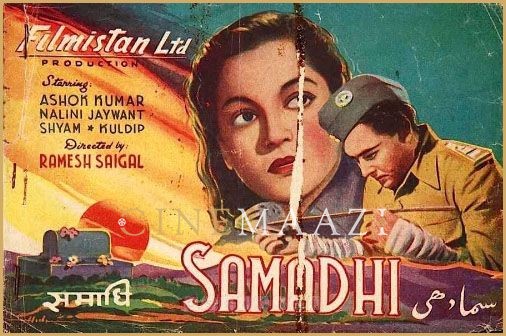
However both the films differed in one key aspect, in their picturization of Netaji. While Bimal Roy used real-life footage of Netaji, Ramesh Saigal chose Colin Paul, who had significant connections to both the independence movement and the film industry, to portray the iconic leader.
Colin hailed from a distinguished lineage of Indian nationalists. His grandfather was Bipin Chandra Paul, a prominent member of the Lal-Bal-Pal trio. His father, Niranjan, was initially involved in the freedom struggle along with Vinayak Damodar Savarkar, but later ventured into playwriting and screenwriting. Niranjan was an integral part of the Himangshu Rai driven Bombay Talkies, writing some of India's earliest blockbusters like Achhut Kanya (1936), and, Jeevan Naiya (1936).

Apart from being close to industry titans like Ashok Kumar, Colin who worked for some time at the Filmistan, did bear a certain resemblance to Netaji. Possibly owing to the confluence of all these connections, the role came to him when he was in his mid-twenties. It is highly probable that he was the first actor to portray Netaji on-screen.
“Baba never openly discussed Samadhi, claiming embarrassment over his own acting skills. Regarding his performance, he told me he did not need to say anything in the film." Colin Paul's daughter Melita Malewar recounted over the telephone from Chennai. "I used to believe that he had no dialogue, but recently I realized the true meaning behind his words after watching the film. It was apparent that someone had dubbed his lines.”
With limited acting pursuits, that included appearances in films like Parineeta (1953) and Naukri (1954), Colin’s journey eventually led him to direct Sohag Sindoor (1953). He soon ventured into other aspects of the film industry, establishing himself as a prominent journalist and publicist. Bengalis may recall him as the Ultorath film magazine's Bombay correspondent during that period.
While one might argue that his performance lacked the finesse or felicity of more worthy successors like Sachin Khedekar, Rajkummar Rao, or Prosenjit Chatterjee, the quirky depiction of Netaji in Samadhi sets it apart.
This film version of Netaji grants pardons to traitors and spies, vows revenge for the death of Kasturba Gandhi, dodges bullets, and mouths dialogues like- "British ne abhi tak koi aisi goli taiyar nahi ki, jo meri jaan le sakey (The British haven't yet manufactured a bullet that can take my life)'' with swag.
Laced with C Ramchandra's catchy tunes like Gore Gore O Banke Chhore and the ever dependable Dadamoni’s presence, Samadhi which ran from 26th May to 6th July 1950 in Kolkata raked up an aggregate figure of 37 weeks at the theatres. On the other hand, Pahela Admi played for an aggregate of 15 weeks from 7th July to 17th August 1950 in Kolkata.
While it might be harsh to brand Samadhi as the weaker film of the two, contemporary Bengali film magazines were bombarded with letters in support of Pahela Admi. Branded as fifties kitsch, the Ashok Kumar starrer was criticized for showing how easily its officials shared top-secret information with commoners. A certain section of the audience found Colin Paul's portrayal of Netaji to be frivolous and flippant. But it was too late. Bengal's hopes in the box office competition were dashed as Bombay emerged victorious by a long margin.
The delayed release of Pahela Admi somewhat soured the relations between Bimal Roy and B N Sircar. As per Arabinda Mukhopadhyay, “After this, B N Sircar didn’t allow Bimal Roy to choose the next film of his will. Even though Bimal da was supposed to direct Mahaprasthaner Pathey (1952), Mr. Sircar assigned it to director Kartik Chattopadhyay. Bimal da thought that Mr Sircar would not make any more films with him. So he left for Bombay. This was a massive blow (to the New Theatres)."
While Roy went on to pen a phenomenal success story in Bombay after this, the New Theatres seemed to be riddled with one problem after another. In addition to splitting with one of their most formidable talents, their financial troubles spiraled out of control. Their new releases bombed at the box office, adding to their woes. A combination of these events accelerated the downfall of the esteemed studio, that was once the torchbearer for quality filmmaking.
In spite of Pahela Admi not really being a frontline success, certain associations will always stick in the minds of film buffs. Besides using INA tunes in its soundtrack, Raichand Boral composed a multi-language song set in the INA barracks, keeping in mind Netaji's diverse forces. Several candidates auditioned for the voice of the Bengali singer, including Akhilbandhu Ghosh and Sanat Singha, before Boral selected Nachiketa Ghosh, then a final year MBBS student. In the coming decades, Nachiketa Ghosh went on to establish his name in the pantheon of Bengali film composers.
In addition to prominent Bengali stars such as Smritirekha Biswas, Pahari Sanyal, Jahar Roy, and Bireswar Sen, Pahela Admi featured Ashita Bose, who’s widely recognized by Bollywood enthusiasts for lip-syncing to Geeta Dutt's Aaj sajan mohe ang lagaa lo in Guru Dutt's Pyaasa (1957). Her son is Master Satyajit, who is known for his roles in films like Hare Rama Hare Krishna (1971), Anuraag (1972), and Shor (1972).
All of Bimal Roy's New Theatres films featured newcomers or relatively unknown actors as the male leads. Pahela Admi's protagonist Kumar was played by debutante Balraj Vij, whose son Deepak has directed films such as Sailaab (1990) and Jaan Tere Naam (1992).
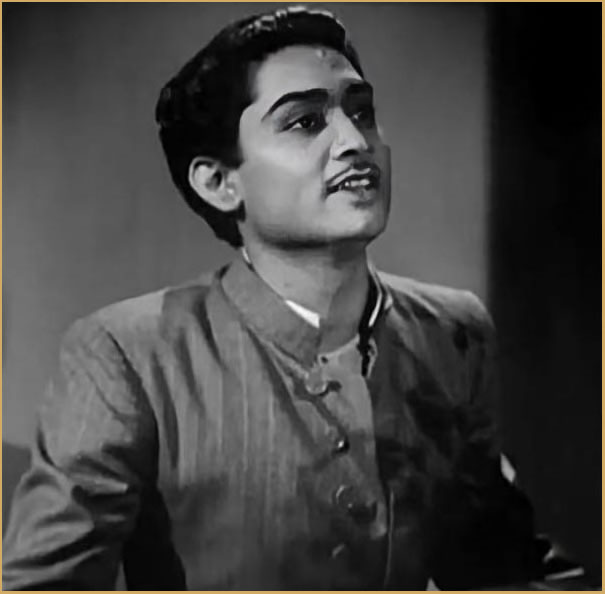
Initially, Bimal Roy was eyeing a Bengali lad for the lead role of Kumar, but he had to drop the idea due to the latter's limited Hindi skills. After a string of flops, that lad bounced back on the saddle in a 1952 film directed by one of Roy's former assistants. His name? Mahanayak Uttam Kumar. The man who redefined Bengali films for the next three decades. But that’s another story.
References
- Ami Jader Dekhechi, Parimal Goswami, Rupa and Company, 1960
- His Majesty's Opponent: Subhas Chandra Bose And India's Struggle Against Empire, Sugata Bose, The Belknap Press of Harvard University Press, 2011
- "Hua Savera", An Unholy Hotch-Potch On Freedom Theme, 17 November 2020, https://www.cinemaazi.com/feature/hua-savera-an-unholy-hotch-potch-on-freedom-them, Originally published in Film India's 1948 issue
- Action: Sushil Majumdar, Compiled and edited by Sanjay Mishra, Simika Publishers, 2022
- Phire Phire Chai- Sushil Majumdar, Prasad, April 1983
- Banaspatir Baithak Vol. 2 Parba 1, Prabodh Kumar Sanyal, Mitra O Ghosh Publishers Pvt. Ltd, 1964
- Interview with Arabinda Mukhopadhyay, Madhyam o Sanjog, January 2004
- Dadamoni: The Authorized Biography of Ashok Kumar, Kishore Valicha, Viking, 1996
- Nachiketa Ghosh, edited by Ashok Dasgupta, Aajkal, 2009
- Pahela Admi: Samadhi, Chitrabani, Asharh 1357
- An interview of Niranjan Paul by Sri Parthib, Rupmancha, Jaistha 1355
- The Encyclopedia of Indian Cinema, Ashish Rajadhyaksha/Paul Willemen, BFI Publishing, Oxford University Press, 1998
- Booklets of Sipahi Ka Sapna(1948) and Pahela Admi(1950)
- Relevant newspaper ads from the erstwhile Bengali daily Jugantar





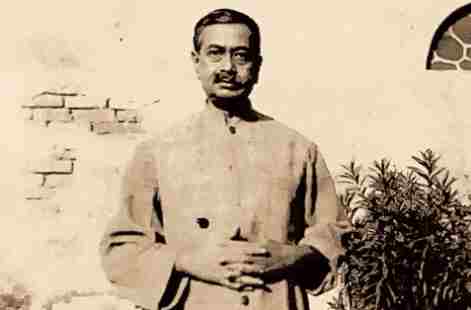
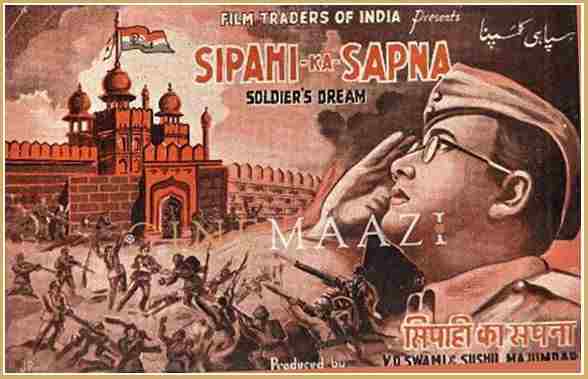
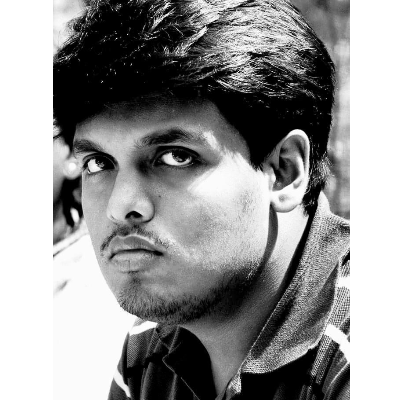
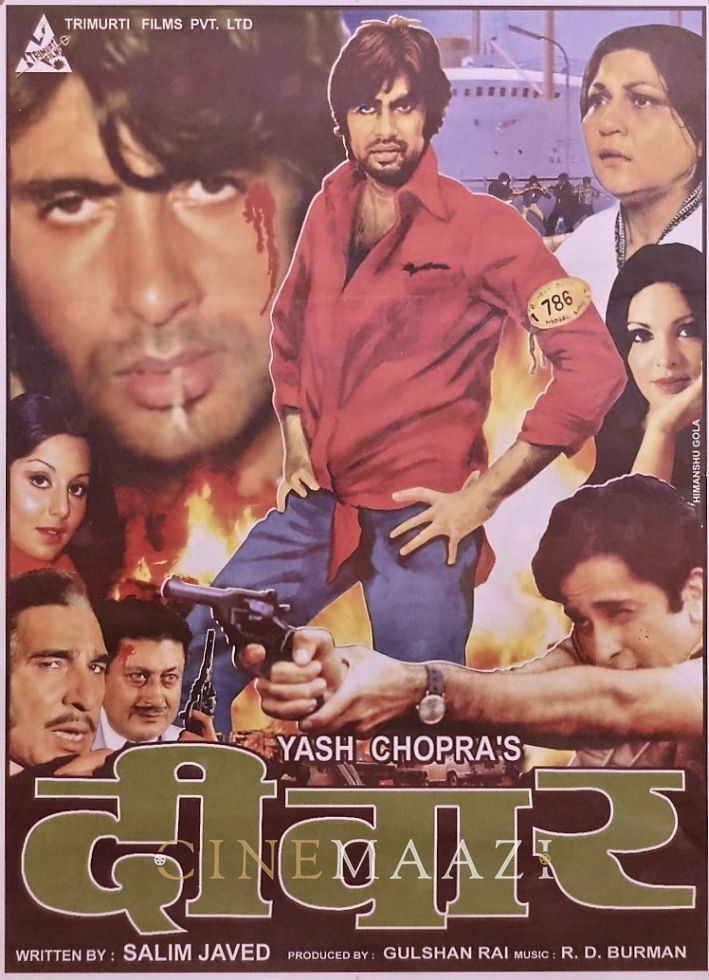
.jpg)

